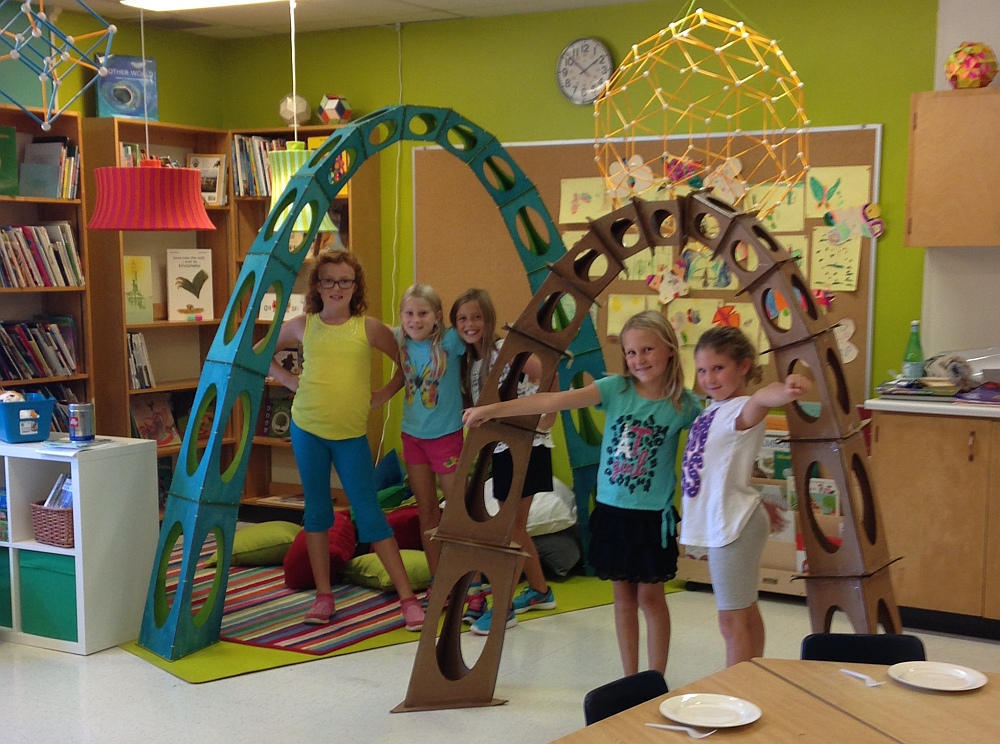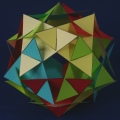 |
Paper
Triangle Ball Students will be
challenged to put together colorful geometric
constructions from cut-out paper triangless. This will
help them deepen their understanding of symmetry and 3D
geometry, while providing a fun hands-on activity
resulting in intricate sculptures each can take home. |
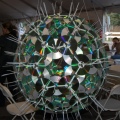
|
Disc-O-Ball (CD truncated
Icosahedron) As a group, we will build a
large truncated icosahedron (otherwise known as a soccer
ball) from CDs. They join together easily using only
cable ties through the holes. Before building it, we
will develop the structure on paper, learning about the
icosahedron and truncation in general. For older
grades, we will examine perspective and some aspects of
symmetry. The result is a shimmering "disc-o-ball"
that can be hung up on display to celebrate the joy of
mathematics. |
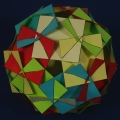
|
Paper
Square Ball Students will be challenged
to put together colorful geometric constructions from
cut-out paper squares. This will help them deepen their
understanding of symmetry and 3D geometry, while providing
a fun hands-on activity resulting in intricate sculptures
each can take home. |
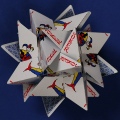
|
12-Card Star
Each student will make a unique construction using giant
playing cards. This take-home sculpture/puzzle encourages
abstract thinking, as students realize how the intricate
shape they have made is actually isomorphic to a cube. |
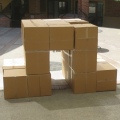 |
Super SOMA SOMA is
a cube-based geometric puzzle designed by Piet Hein in the
1930's. In this workshop, students will learn about this
classic puzzle by constructing the individual pieces out
of wood cubes and solving a progression of problems that
lead up to a giant cardboard version which can be
displayed and used repeatedly. |
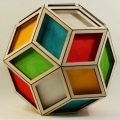 |
Rhombic
Triacontahedron Puzzle The rhombic
triacontahedron (RT) is a lovely Archimedean dual polyhedron
which can be dissected into 20 rhombohedra. Students will
work in groups to build the components from paper and then
assemble them into the RT. A coloring aspect will be
introduced which adds a second level of interest to the
puzzle. Finally, students will create one large cardboard
model for the classroom. |
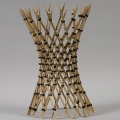
|
Hyperboloid
Using ordinary kabob skewers (or chopsticks) and rubber
bands, students will create a fun flexing hyperboloid
while learning to internalize and continue an initially
challenging geometric pattern. Students will work in pairs
to make a model and see from it how a curved surface can
be constructed from straight lines. |
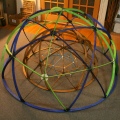
|
Domes
Students will become familiar with this classic geometric
shape popularized by Buckminster Fuller. Several
variations are presented: an inexpensive paper model and
several human-scale cardboard or wood structures.
Teachers can select the most appropriate version depending
on their space, budget, and tools.
|
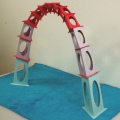
|
Catenary
Arches Students will be introduced to the
architectural properties of this elegant curve with a choice
of three different materials and scales. Assembling
the modules is a fun collaborative challenge that requires
patience and balance. It introduces some mathematical
terminology while leading students to develop a physical
intuition for the catenary curve.
|
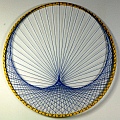
|
Rings
and Strings This workshop uses addition
and multiplication to lead students in the creation of
decorative circular graphs, from small ornaments to large
window displays. These two-dimensional artworks are made by
following simple algorithmic procedures to thread colored
string through numbered holes on a wooden circle.
|
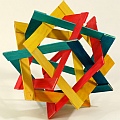
|
Polylinks
This is a series of three beautiful constructions made from
"craft sticks" (larger popsicle sticks). They derive
from familiar regular polyhedra, but the faces connect by
linking instead of joining edge-to-edge. Students will
develop their problem-solving skills as they learn about new
types of geometric forms.
|
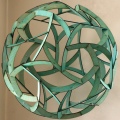
|
Four
Geometric Sculptures Beautify your
environment with four geometric sculptures that serve as
centerpieces for mathematical conversations. An
additional activity leads students to understand the
mathematical principles underlying them and to design their
own sculpture.
|
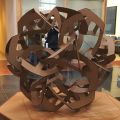
|
Cardboard
Constructions Cardboard allows huge
long-lasting constructions at very low cost. These
make great focal activities for math festivals and similar
events.
|

